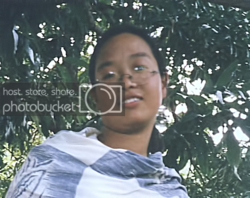A few more comments abrogrard: if you want to sharpen an image of this quality, then try to focus on those areas where you can expect maximum visual gain, like tiny shadows in mouth, nostrils, near eyes and areas like that, do not sharpen the complete image. In this image I would avoid sharpening the background for example. Think out of the box and ask yourself if it needs to be sharpened. In my opinion the photo would look better when you slightly blur the background and remove the noise, because it creates a slight depth of field, which makes the main subject stand out and again creates the illusion of sharpness.
It's also important that you analyze an image. Never retouch an image without a careful examination first and focus not only on what you should do, but also what you shouldn't do, because less is often better. In the case of noise, ask yourself what kind of noise you're looking at. Also examine the channels and ask yourself if it's wiser to focus on one particular channel only.
Secondly, skin only needs to be retouched, there is no point in sharpening this skin, because the fine pores are already completely gone and any sharpening will only make any artifacts stand out. As for noise removal, only focus on areas that truly matter, never apply noise removal to the completely image, but in the case of people try to focus on important areas like skin and avoid blurring the eyes at all cost.
People often apply corrections to the complete image. This might work well for many images straight out of a modern digital camera, but with older images that's often the wrong approach.
Let's say you want to sharpen the image. Make a copy of the image after all the major retouching, sharpen it and then add a black mask that hides all the sharpening. Now paint in all the areas that need to be sharpened with a soft white brush on your mask. If you make a mistake, then paint it back with black. Of course you can also use the reversed approach and start with a white mask and black brush. The same technique can be used for other corrections.
Also make sure that you never try to make it a rush job. Laziness is a retoucher's worst enemy and make sure you work as much as possible non-destructively and constantly monitor your progress in every area of the image with a before/after view.








